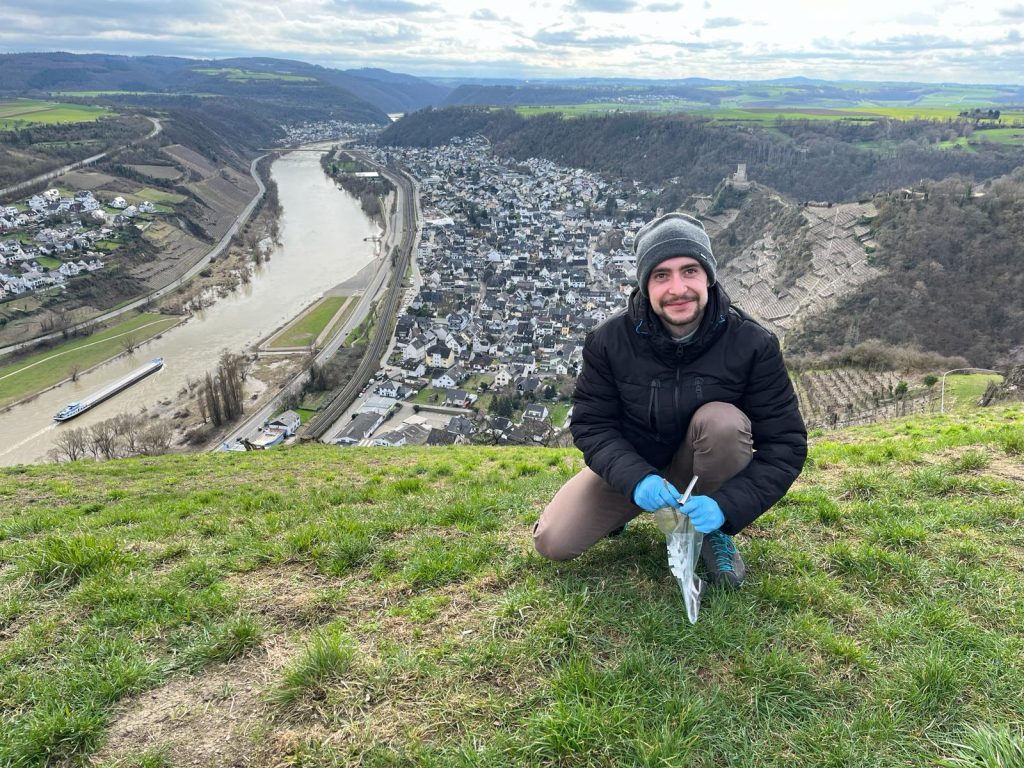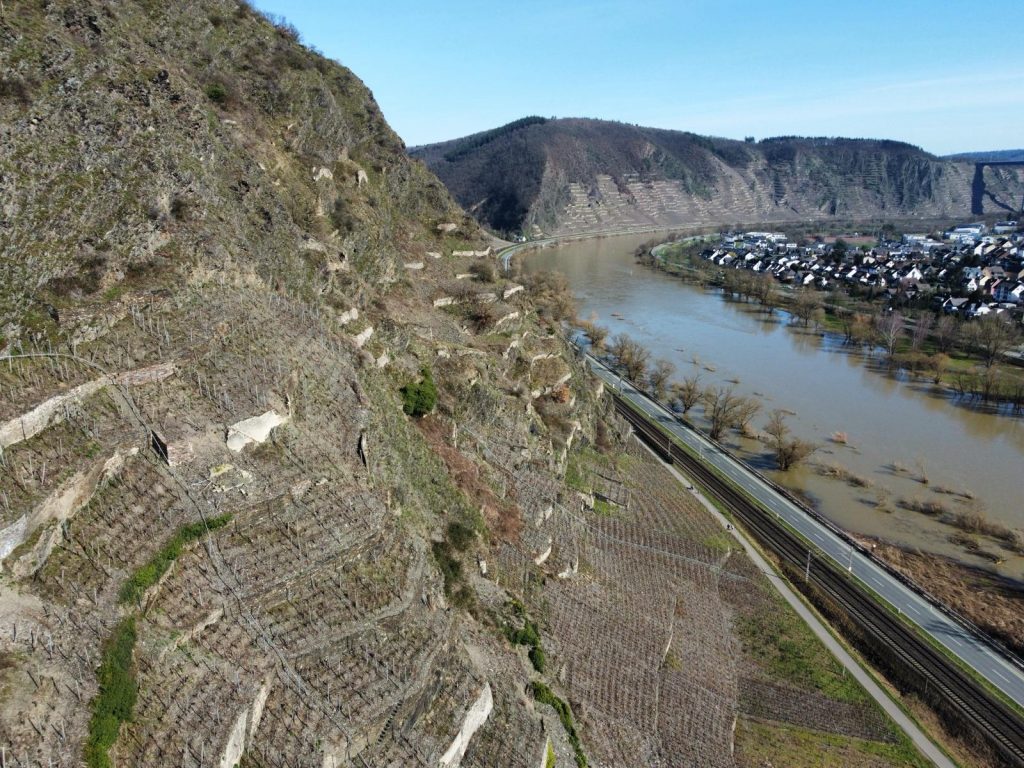In this blog post, Lorenz Witt and Ken Mauser provide some background on an excursion to the Mosel Valley. Their objective was to investigate the exposure of terrestrial non-target ecosystems to pesticides, potentially threatening the remaining habitat of a critically endangered butterfly species.
The region of the lower river Mosel is known for its unique vineyards, whose slopes, in combination with warm site conditions, offer a special ecosystem for flora and fauna and also allow the growing of wine (Figure 1).
The steep slopes make it difficult to reach places within the vineyards and make it economically inefficient to apply pesticides by hand. Therefore pesticides are applied by helicopter, one of the few exemptions of the ban of aerial pesticide applications. The helicopter applications and the already pesticide-intensive viticulture is associated with a suspected risk to non-target organisms. The region of the upper Mosel provides a habitat for rarely seen species like the rock bunting (Emberizacia) or the western green lizard (Lacerta bilineata). But the celebrity of the region, eponymous for the hiking trail along the river Mosel is the mountain Apollo (Mosel-Apollofalter, Parnassius apollo ssp. vinningensis). It is a highly endangered and endemic subspecies which means it only appears in this region. Unfortunately, its numbers have been rapidly declining the last years and local lepidopterologists and nature conservationists are concerned about the decline of the Mosel-Apollo and continue to popularize the issue. Causal factors are loss of the original open habitat by growth of brambles, change of the climatic conditions at the Mosel and exposure of foodplants, caterpillars and butterflies with pesticides.
For the pesticides in this equation, our Ecotoxicology and Community Ecology team from the RPTU Landau joined with colleagues from Georg Petschenka’s Applied Entomology group of the University of Hohenheim to study specific site exposure and the impact of pesticide applications on the butterfly. Therefore, samples of soil, vegetation and the food plant of the butterfly, the white stonecrop (Sedum album), were taken to determine the pesticide background contamination before the first application via helicopter starts, in May.
Arriving at almost 20 °C and sun, the weather could not have been better for sampling the first sites along river Mosel (Figure 2). Reaching the sampling sites felt more like alpine climbing but we were rewarded with a beautiful view on the Mosel valley. After a first day of sampling and a detailed impression of the valley we went to a restaurant in Cochem and enjoyed the fantastic food away from the tourist high season.
Starting the next day, we faced a change in weather conditions and were secretly happy about the associated lower risk of sunburn. Sampling in the morning was cloudy, windy, and cold, but we were in a productive mood (Figure 3). In sum, multiple locations with different intensities of viticulture were sampled, whereby different distances to the target area of a pesticide helicopter overflight path were recorded.

Conclusion
We are looking forward to this interesting collaboration project with Georg Petschenka and his group from the University of Hohenheim to determine the pesticide residues in various terrestrial matrices and their potential importance to butterfly habitats.
For further information on the decline of the Mosel-Apollo, you can read the press release of the German Environmental Agency (UBA) (in german) (Link to their press release from 29.2.2024).


